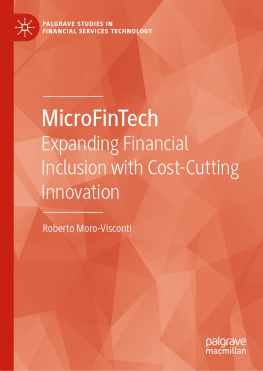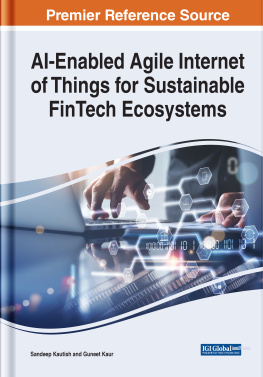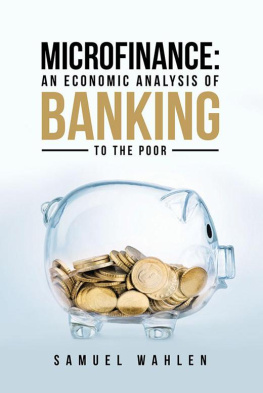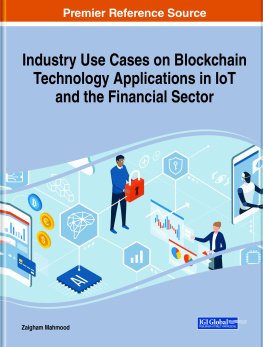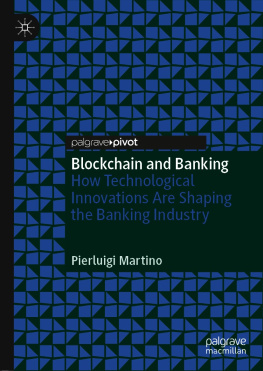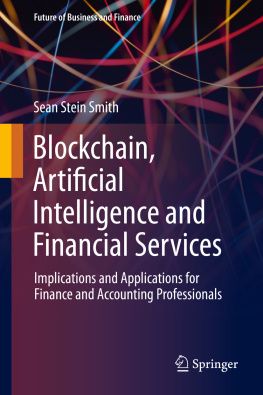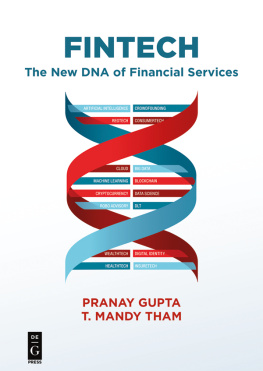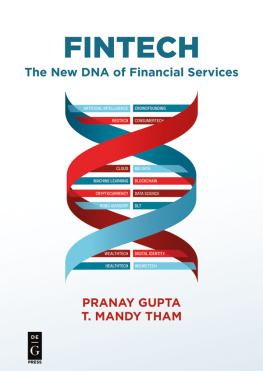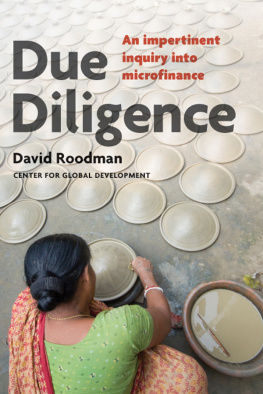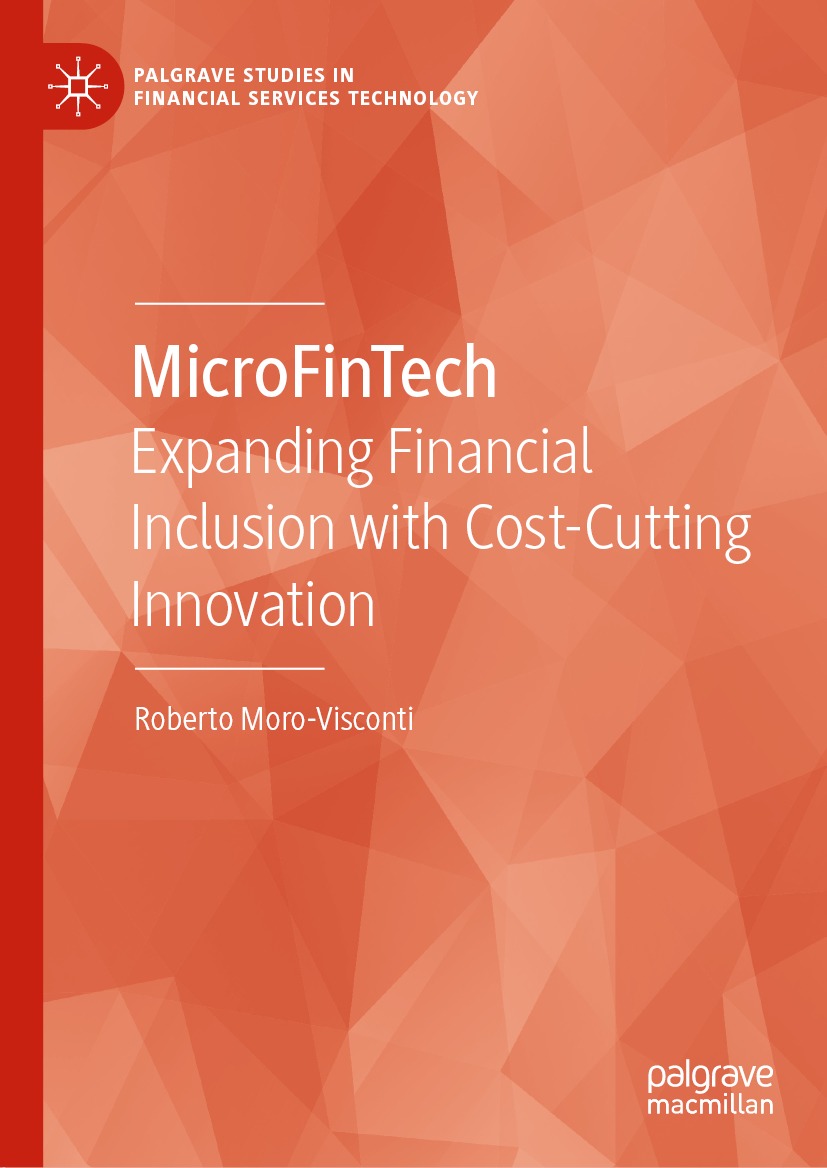Palgrave Studies in Financial Services Technology
Series Editor
Bernardo Nicoletti
Rome, Italy
The Palgrave Studies in Financial Services Technology series features original research from leading and emerging scholars on contemporary issues and developments in financial services technology. Falling into 4 broad categories: channels, payments, credit, and governance; topics covered include payments, mobile payments, trading and foreign transactions, big data, risk, compliance, and business intelligence to support consumer and commercial financial services. Covering all topics within the life cycle of financial services, from channels to risk management, from security to advanced applications, from information systems to automation, the series also covers the full range of sectors: retail banking, private banking, corporate banking, custody and brokerage, wholesale banking, and insurance companies. Titles within the series will be of value to both academics and those working in the management of financial services.
More information about this series at http://www.palgrave.com/gp/series/14627
Roberto Moro-Visconti
MicroFinTech
Expanding Financial Inclusion with Cost-Cutting Innovation
1st ed. 2021

Logo of the publisher
Roberto Moro-Visconti
Catholic University of the Sacred Heart, Milan, Italy
ISSN 2662-5083 e-ISSN 2662-5091
Palgrave Studies in Financial Services Technology
ISBN 978-3-030-80393-3 e-ISBN 978-3-030-80394-0
https://doi.org/10.1007/978-3-030-80394-0
The Editor(s) (if applicable) and The Author(s), under exclusive license to Springer Nature Switzerland AG 2021
This work is subject to copyright. All rights are solely and exclusively licensed by the Publisher, whether the whole or part of the material is concerned, specifically the rights of translation, reprinting, reuse of illustrations, recitation, broadcasting, reproduction on microfilms or in any other physical way, and transmission or information storage and retrieval, electronic adaptation, computer software, or by similar or dissimilar methodology now known or hereafter developed.
The use of general descriptive names, registered names, trademarks, service marks, etc. in this publication does not imply, even in the absence of a specific statement, that such names are exempt from the relevant protective laws and regulations and therefore free for general use.
The publisher, the authors and the editors are safe to assume that the advice and information in this book are believed to be true and accurate at the date of publication. Neither the publisher nor the authors or the editors give a warranty, expressed or implied, with respect to the material contained herein or for any errors or omissions that may have been made. The publisher remains neutral with regard to jurisdictional claims in published maps and institutional affiliations.
No Cover credit
This Palgrave Macmillan imprint is published by the registered company Springer Nature Switzerland AG
The registered company address is: Gewerbestrasse 11, 6330 Cham, Switzerland
Contents
List of Figures
List of Tables
The Author(s), under exclusive license to Springer Nature Switzerland AG 2021
R. Moro-Visconti MicroFinTech Palgrave Studies in Financial Services Technology https://doi.org/10.1007/978-3-030-80394-0_1
1. Introduction
Roberto Moro-Visconti
(1)
Catholic University of the Sacred Heart, Milan, Italy
Roberto Moro-Visconti
Email:
Microfinance is a renowned albeit controversial solution for giving financial access to the unbanked , even if micro-transactions increase costs, limiting outreach potential. The economic and financial sustainability of microfinance institutions (MFIs) is a prerequisite for widening a potentially unlimited client base. Automation decreases costs, expanding the outreach potential, and improving transparency and efficiency . Technological solutions range from branchless mobile banking to geo-localization of customers, digital/social networking for group lending , blockchain validation, big data , and artificial intelligence , up to MicroFinTech FinTech applications adapted to microfinance. This study examines these trendy solutions comprehensively, going beyond the existing literature and showing potential applications to the traditional sustainability versus outreach trade-off.
Microfinance is by now a consolidated and successful mean to provide credit to the neediest. Going beyond traditional banking , it helps the poor to sort out bank exclusion, which is one of the main misery traps (Collier, ) that prevents billions of underserved, especially women , from escaping atavistic poverty.
While the success of microfinance, since the pioneering intuition of Yunus , has gone beyond any expectation, its implementation is still typically subsidized and raises growing concerns. Self-sufficiency and economic sustainability represent, in most cases, a mighty goal, whose attainment would allow microfinance institutions (MFIs) to broaden their clientele (potentially unlimited, being represented by billions of unbanked poor).
Microfinance is a renowned solution for giving financial access to the unbanked , even if micro-transactions increase costs, limiting its outreach potential.
The economic and financial sustainability of microfinance institutions is a prerequisite for the capacity to widen their potentially unlimited client base.
Microfinance, however, suffers from a business model that is typically expensive and inefficient, with high operational fees that, unless subsidized by forward-looking donors , translate to interest rates, up to the boomerang point of promoting poverty, instead of eradicating it. Recent evidence suggests only modest social and economic impacts of microfinance. Favorable costbenefit ratios then depend on low costs (Morduch et al., ).
Consistently with this view, microfinance cannot be a silver bullet for development and profit-oriented MFIs are problematic (better unbanked that unable to repay loans). The business industry remains opaque, and mission drift ) are even more skeptical, arguing that microfinance constitutes a powerful institutional and political barrier to sustainable economic and social development, and so also to poverty reduction.
Technology , starting from electronic payments, may foster financial inclusion and availability/affordability of financial services in developing economies, softening the perverse effects of microcredit (Dos Santos & Kvangraven, ).
While there is an impressive literature on microfinance (for a comprehensive introduction, Armendariz De Aghion & Morduch, ).
This study represents an advance in the debate about the trendy opportunities of microfinance.
Consistently with this framework, the research question is the following: given the economic andorganizational bottlenecksthat prevent an optimal outreach of traditional microfinance, which is the impact onmicrofinance sustainabilityof technology-driven innovation?
Traditional banking systems are unfit for illiterate poor with no guarantees, while ad hoc products, tailored to suit the needs of potentially billions of peculiar and unconventional borrowers, might prove successful in widening financial access, with a positive side effect of reducing inequalities and fostering economic development. Financial innovation and flexibility are key solutions for forms of lending that are collateral , or cash flow -based only to a small extent.

